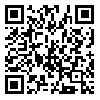BibTeX | RIS | EndNote | Medlars | ProCite | Reference Manager | RefWorks
Send citation to:
URL: http://tumj.tums.ac.ir/article-1-1102-en.html
Background: Pulmonary Nocardiosis is an infrequent infection whose incidence seems to be on the rise due to a higher degree of clinical suspicion and to an increasing number of immunosuppressive factors. The present investigation was carried out to detect Nocardiosis in immunocompromised patients confined in the pulmonary ward of Tehran’s Shariati Training Hospital through the use of indirect immunofluorescence assay (IFA) and bacterial culture methods. The comparison of the two methods and the correlation between the antibody titer and the statistical and epidemiological data were also investigated.
Materials and Methods: 101 patients with advanced symptomatic pulmonary infection were studied in the course of a twenty-month period. Individual patients’ sputum, BAL (bronchoalveolar lavage) and blood sera were tested. From each sample three thin smears were prepared for microscopic observations. The samples were cultured in Sabouraud’s dextrose, blood and paraffin agar. The detection of antibody against Nocardia asteroides was carried out in all study groups, using the IFA method. The medical history of patients was also obtained through questionnaires for further analysis.
Results: Nocardia asteroides was isolated from only one patient suffering from Wagner vasculitis with an antibody titer of in serum. The 41 patients suspected for Nocardiosis with an antibody titer ranging from to , detected by IFA method, included 26 (63.4%) men and 15 (14.8%) women. The age of the patients varied from 7-80 years. Those with reasonable antibody titers included 15 (36.5%) housewives and 9 (21.9%) workers. Furthermore, in-vitro investigation for the differentiation of the isolates was performed and confirmed the notion that the organism which grew on the primary media was, indeed, the Nocardia asteroids complex.
Conclusion: Our results revealed that the broncho-pulmonary infections, which occur in high-risk patients -T-cell deficiencies, long term corticosteroid therapy, immunocompromised hosts, HIV infection, organ transplantation- was an important index for the primary diagnosis of Nocardiosis. As the important finding of the present research, the antibody titer of could be proposed as the criterion for the diagnosis of the infection. The probability of Nocardiosis was proposed when antibody titer was less or more than .
| Rights and permissions | |
 |
This work is licensed under a Creative Commons Attribution-NonCommercial 4.0 International License. |





